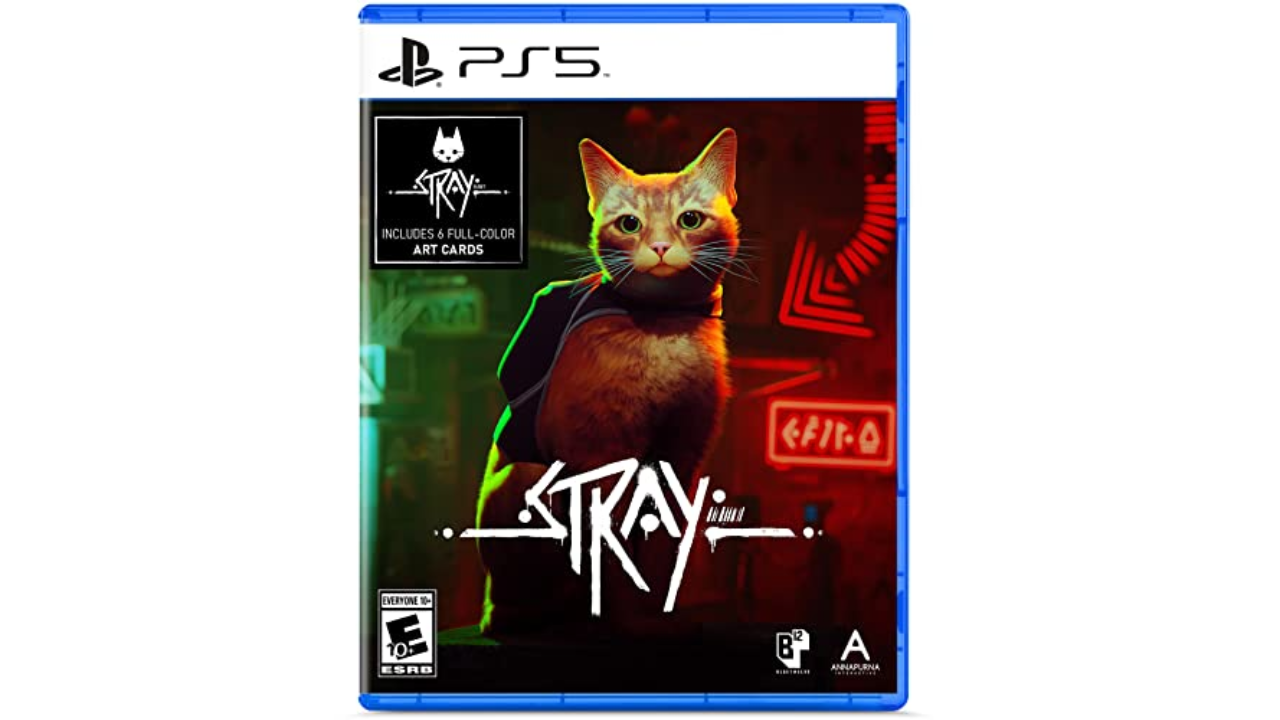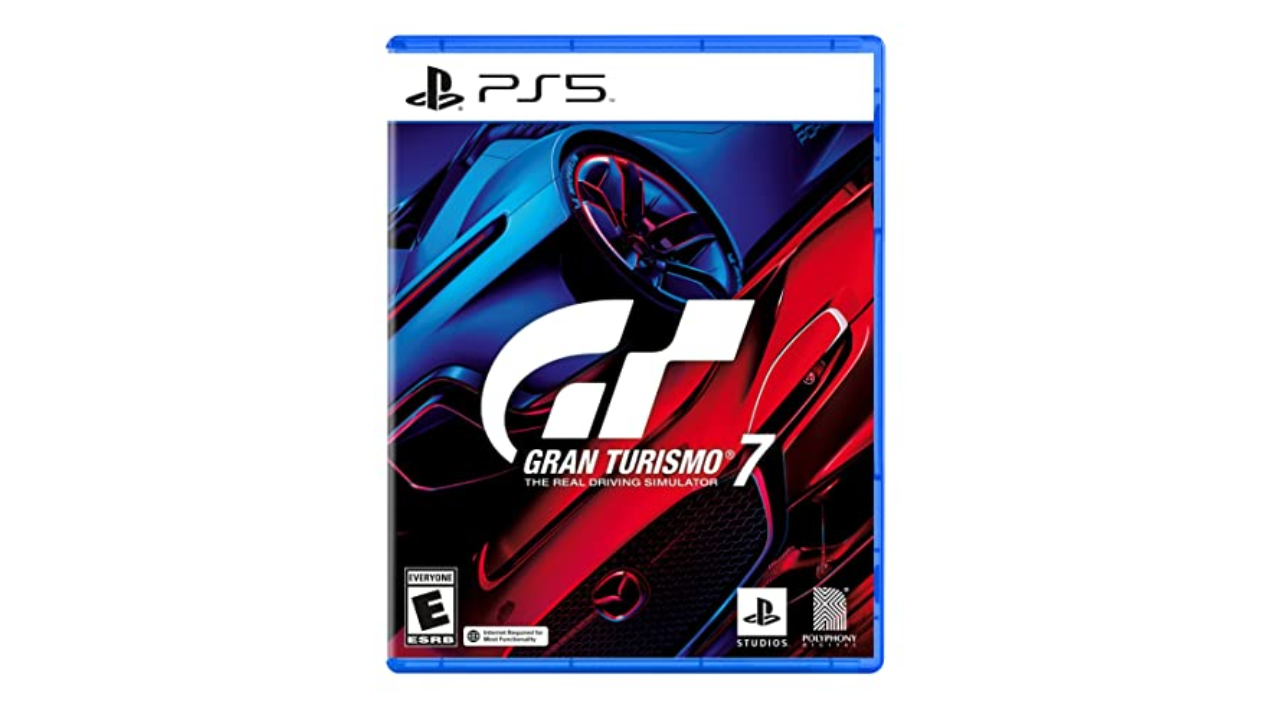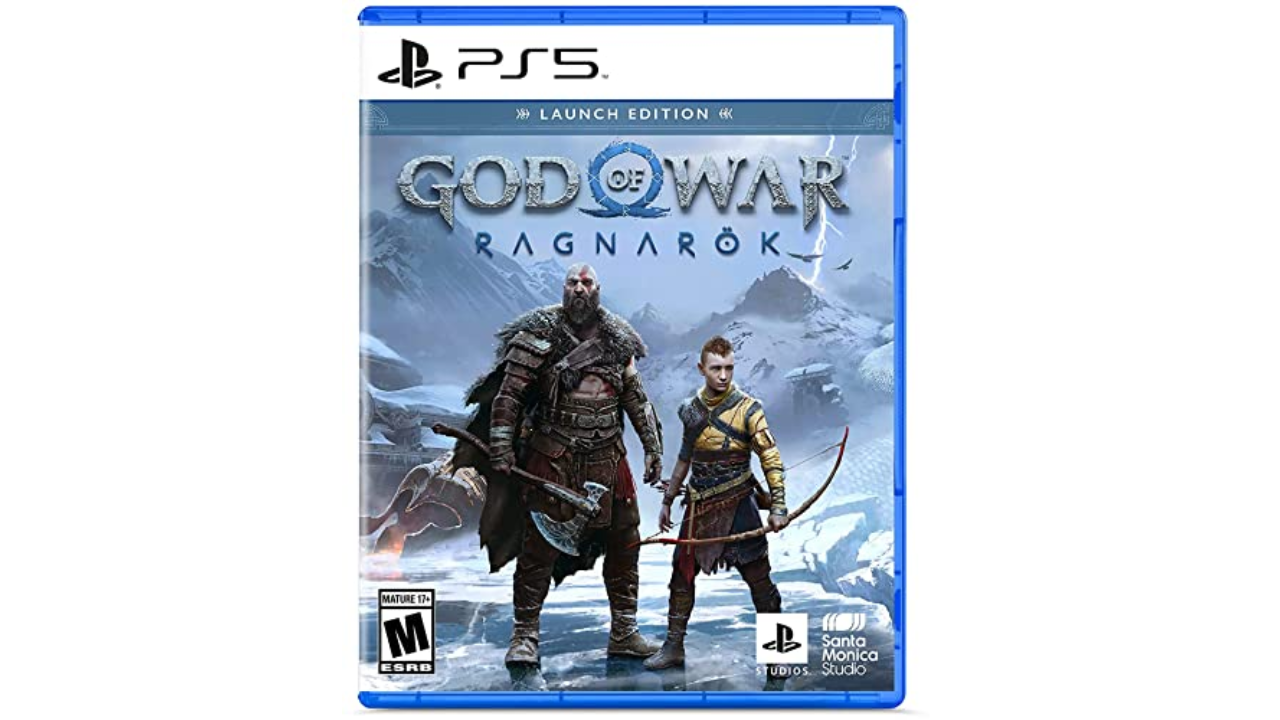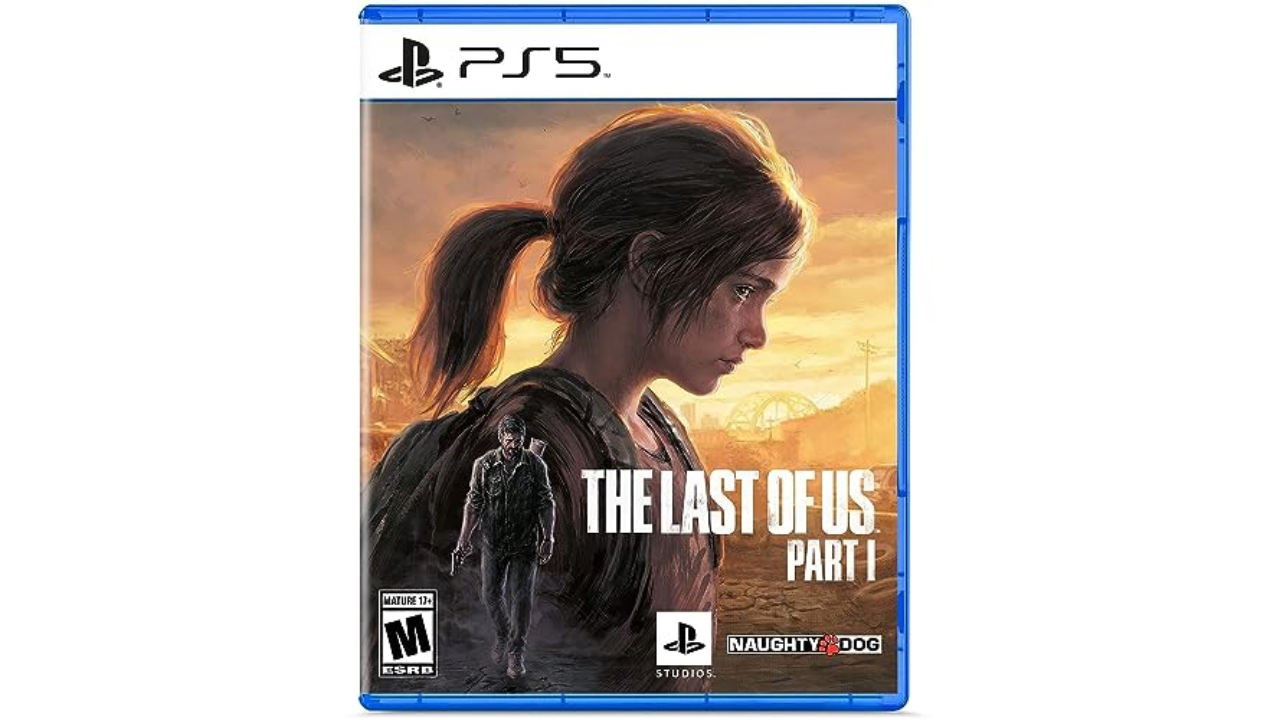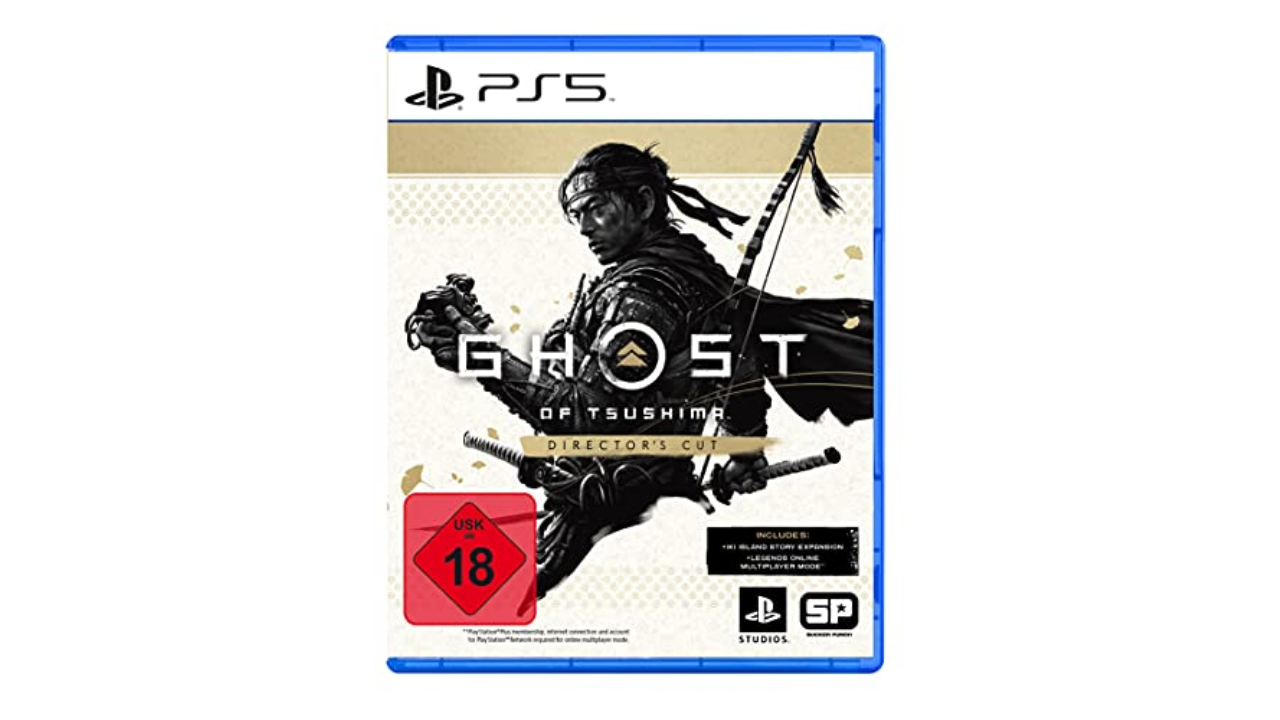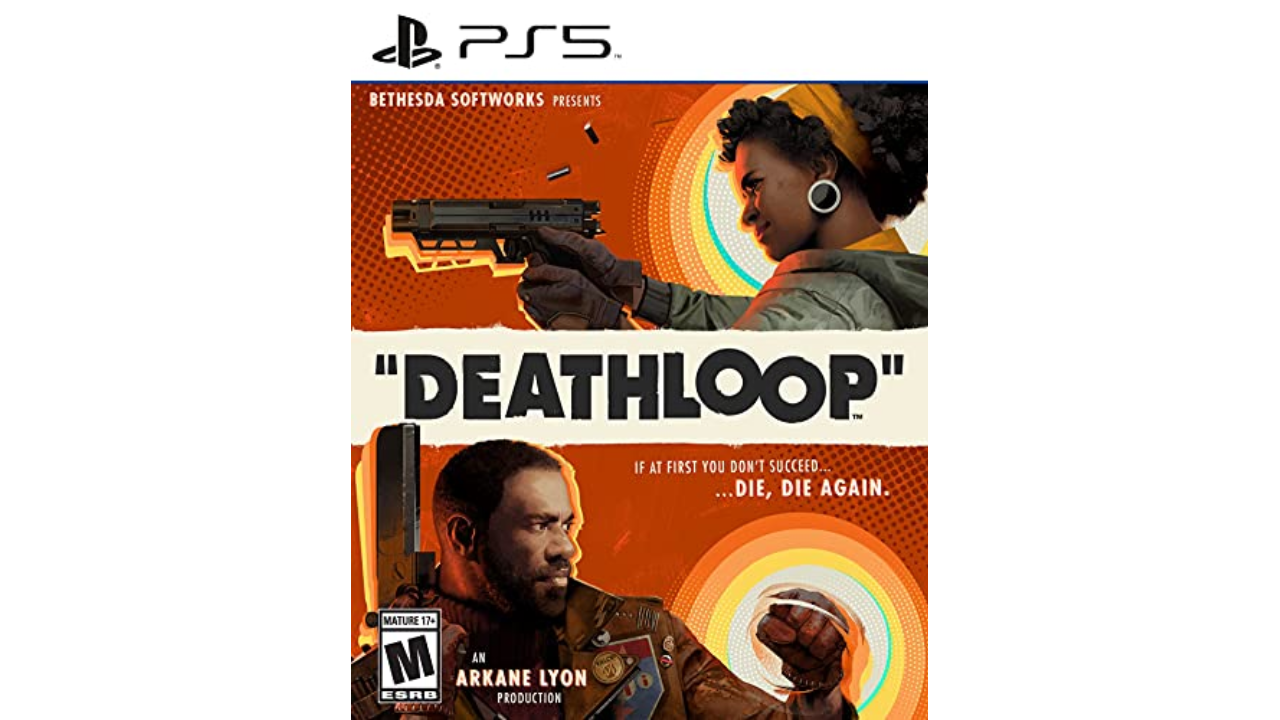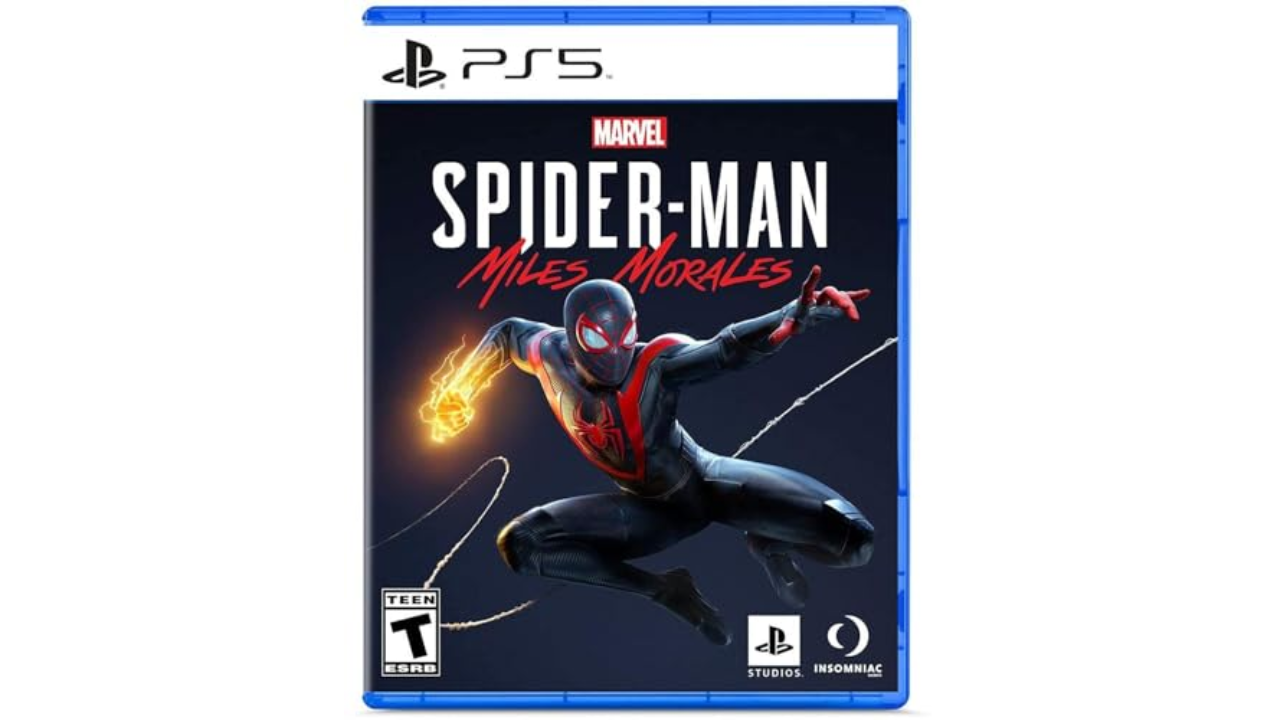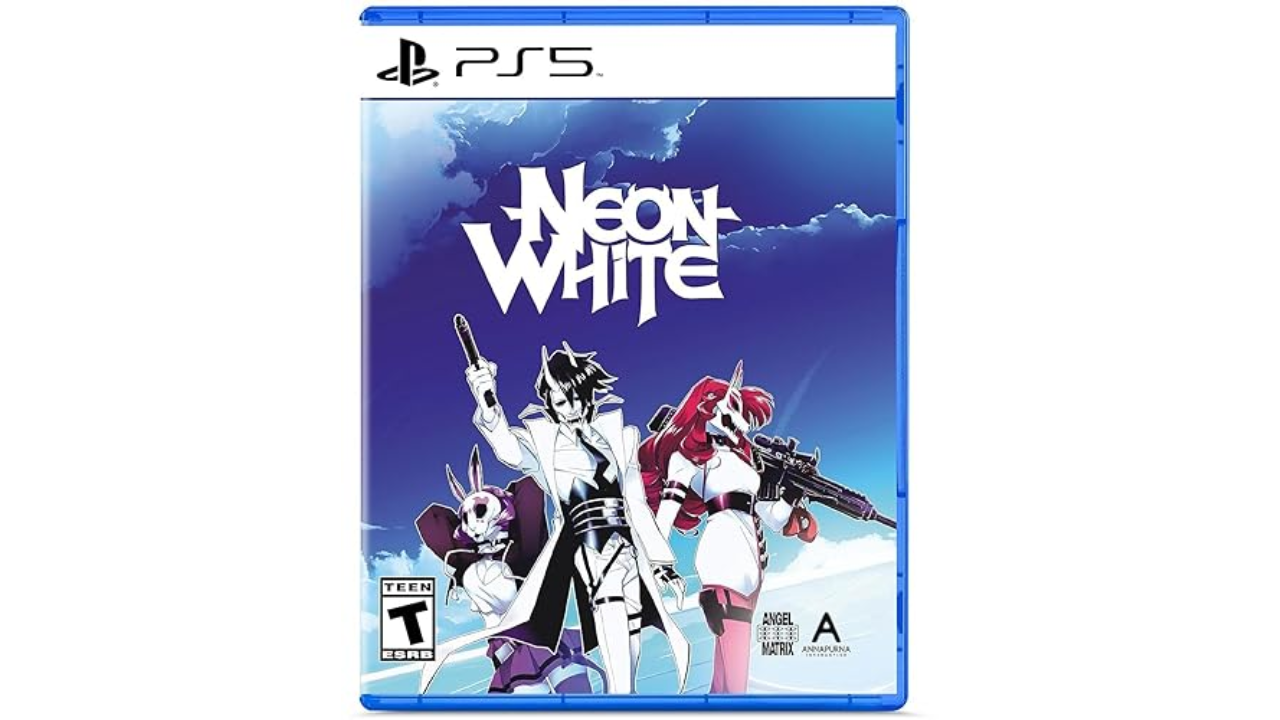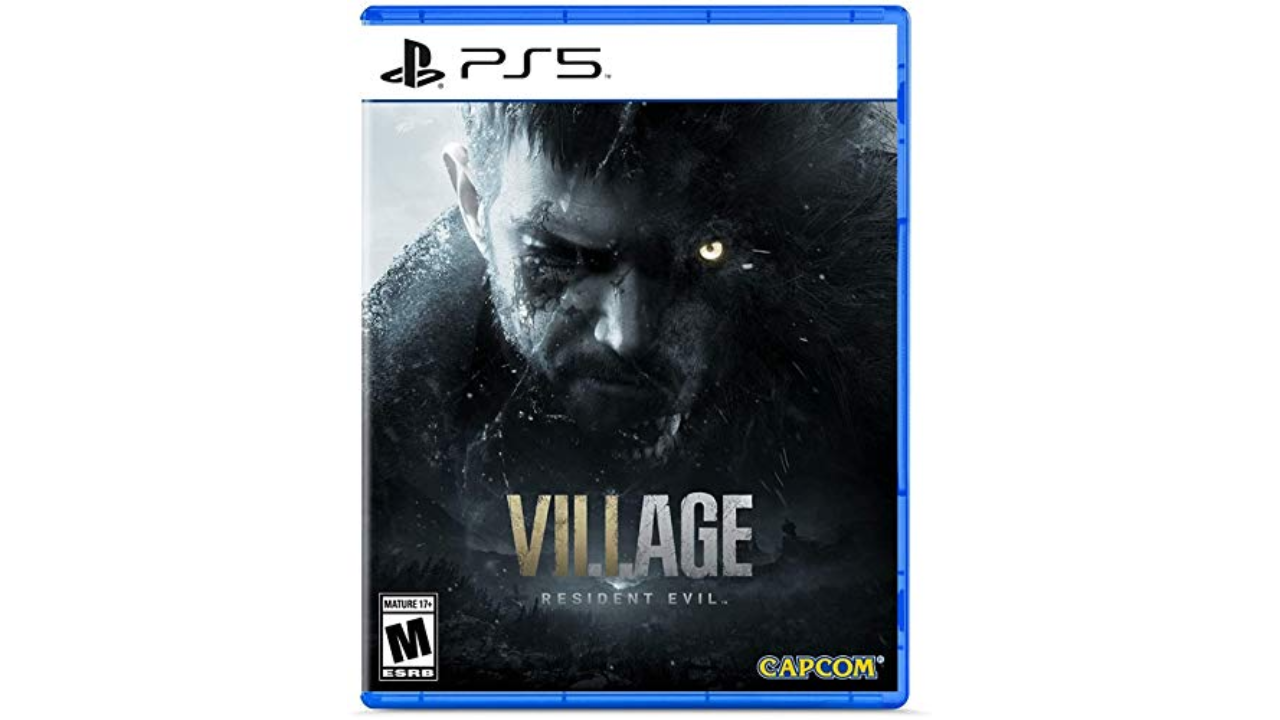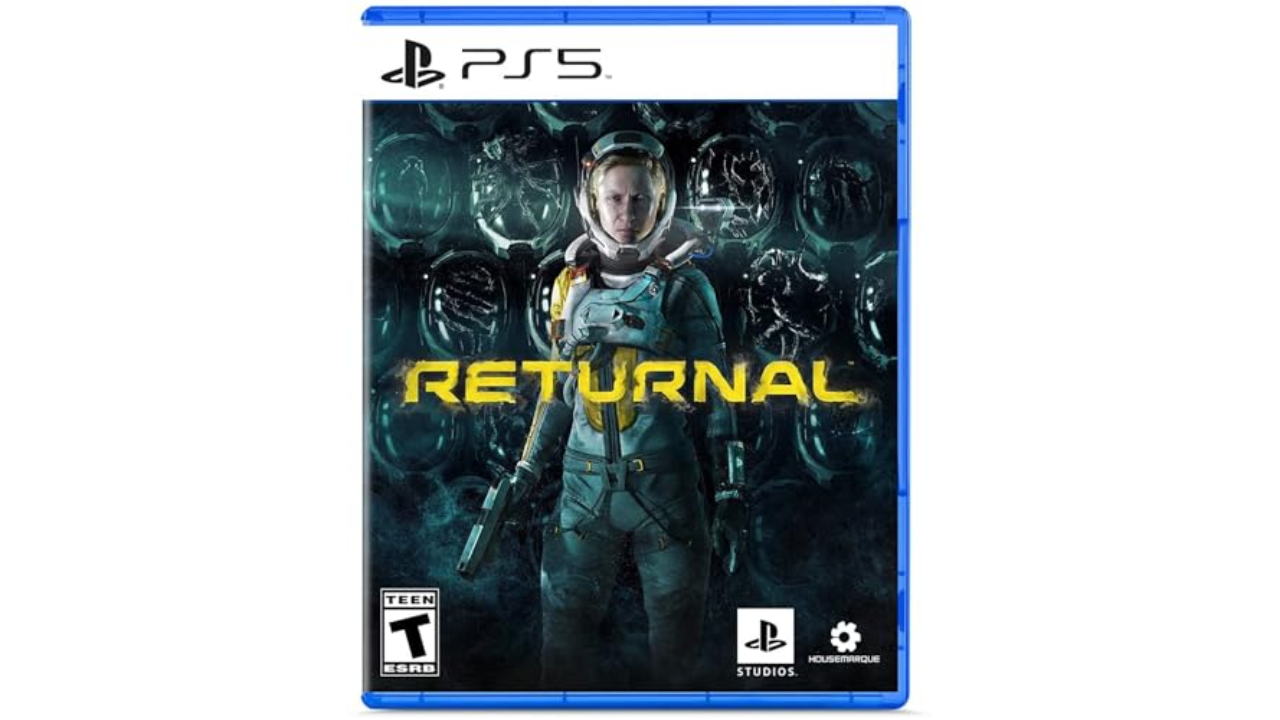Engadget has been testing and reviewing consumer tech since 2004. Our stories may include affiliate links; if you buy something through a link, we may earn a commission. Read more about how we evaluate products.
The best PS5 games for 2024: Top PlayStation titles to play right now
Load up your console with these excellent games.
Got a PlayStation 5 but not sure what to play next? With the massive library available, it’s easy to get a little lost scrolling through titles. From award-winning adventures to intense action RPG experiences, there’s a world of incredible games to explore. You’ve got options across every genre, whether you’re into fast-paced shooters, immersive stories that will suck you in for hours, like Elden Ring, or epic multiplayer challenges. And let’s not forget those exclusive gems that make the PS5 shine, like Demon’s Souls or the latest Final Fantasy installment.
Even if you’re a seasoned gamer, sometimes you just need a little inspiration to dive back into the console and discover new worlds. Whether you’re after complex game modes that push your skills or just want a taste of that next-gen power, these PS5 games will give you plenty of reasons to keep your controller close. So, if you’re ready for the ultimate adventure (or maybe just an excuse to escape for a while), we’ve got some suggestions that will keep the boredom at bay.
Read more: The best SSDs for PS5
Best PS5 games for 2024
Read our full Astro Bot review
Astro Bot is a gorgeous 3D platformer with an adorable protagonist, dozens of planets to explore and a wide range of ultra-satisfying mechanics to perfect. It requires patience, awareness and a high degree of platforming skill, though resets are generous and failure doesn't cost anything other than your time. The main character, Astro, is endlessly charming as he flies among galaxies on a mission to rescue 300 of his friends, many of whom embody characters from Sony’s library and the wider gaming world — bots from Capcom, Konami and Sega franchises abound.
Many of the planets that Astro lands on introduce new mechanics, such as spring-loaded boxing gloves that look like frog faces, an octopus that blows Astro up like a balloon, a mouse backpack that shrinks him at will, a penguin-propelled swimming booster, and a stopwatch that temporarily freezes time. Stages are designed around these unique mechanics and the diversity on display is impressive.
Beyond pure cuteness, Astro Bot is beautiful. Its landscapes are sharp and alive with interactive details, and it seems like every pixel has been polished to perfection. But it’s the game’s physics that energize everything — when Astro lands on top of a giant inflatable daisy, the material buckles under his little feet, indenting with each step and sway, and making the entire scene look utterly squeezable. When rain hits Astro’s umbrella hat, the sound is mirrored perfectly on the DualSense, along with the feeling of raindrops on the grips. Astro Bot’s sound effects, haptics, graphics and physics harmonize flawlessly, transforming every surface into a playground. It’s magical.
Astro Bot feels purpose-built for video game fans. It’s a skill-driven celebration of everything that makes the format so memorable and joyful, and at the same time, it’s an excellent introduction to the language of games. With precise and responsive controls, lovable characters, and an exciting variety of mechanics and environments, Astro Bot is easily one of the best games that Sony has ever produced. — Jessica Conditt, Senior Reporter
Read our full Neva review
Neva is a perfect platformer. It stars Alba, a seasoned warrior with a cloud of silver hair, and her wolf companion, Neva, who grows from a cub into a fierce fighter as the seasons progress. Alba and Neva are deeply connected — there’s a button that makes Alba call out, “Neva,” in varying degrees of distress — and together they're on a mission to rid the world of an evil black decay. On top of a powerful narrative arc, Neva is a light and responsive platformer, with twitchy dodging and slashing mechanics, and its puzzles are satisfying to solve. The game comes from Nomada Studio, the indie team behind Gris, and it’s a testament to their sense of artistry, mechanical fidelity and emotional storytelling.
Neva is infused with magical realism, blending the familiar with the impossible in a format that looks like a living children’s book. Otherworldly terror creeps around the edges of each landscape and the game’s animations are anime-smooth. Neva looks incredible and it plays just as beautifully — a rare and powerful combination. Just like Alba and Neva. — J.C.
Alan Wake 2 is part gritty cop drama, part paranormal thriller and part Nordic rock opera — but mostly, it’s just a fantastic game. It’s a third-person survival horror experience starring two people whose worlds are colliding: FBI special agent Saga Anderson and the famous writer Alan Wake, who’s been lost in purgatory for 13 years. Players swap between Saga and Alan as they investigate a string of ritualistic murders tied to Alan’s past, fighting off dark specters and flitting among twisted realities. Saga’s Mind Place and Alan’s Writer’s Room provide space for players to put together clues and unlock new bits of the story, while a flashlight and a pistol round out the action sequences.
Alan Wake 2 tells an introspective tale of murder, monsters and the Old Gods, and it contains all of the moody psychological flair that Remedy Entertainment is known for. The original Alan Wake is also worth booting up, but Alan Wake 2 is fully accessible to new players and it’s fine to dive straight in. — J.C
Developer Remedy Entertainment might be best-known for the Alan Wake series, but 2019’s Control exemplifies the company’s mysterious aesthetic and world-building that’ll turn your brain upside down. In it, you’ll explore the Federal Bureau of Control and its Manhattan headquarters, The Oldest House. The FBC is all about investigating paranormal activity, and The Oldest House is appropriately paranormal itself. Protagonist Jesse Faden starts off trying to find some information about her missing brother and is quickly swept up trying to keep all hell from breaking loose.
The story is not easy to sum up, and even as you play it’ll get pretty baffling (but in a fun way). It’s augmented by some memorable gameplay mechanics, though, as Faden quickly gets her hands on a variety of telekinetic powers and a shape-shifting service weapon that make blasting through the various ghoulish creeps a delightful experience. Between her many powers and the different ways you can upgrade weapons and your powers throughout the game, everyone’s going to come across a different play style that works for them. And while the brutalist design of The Oldest House could get repetitive, Remedy throws enough variation in the different areas you explore to keep things fresh and interesting.
While Control was originally released for prior-generation consoles, Remedy has since released an “Ultimate Edition” with all the game’s DLC and extras that runs specifically on the PS5. — Nathan Ingraham, Deputy Editor
Read our full Stray review
If you love cats, you’ve got to play Stray. If you don’t, Stray might change your mind. It’s a short, fairly simple game that excels at atmospheric detail. You control a little stray cat who gets separated from his crew and tossed into a creepy, retro-future city. The environment is exquisitely rendered, the music sets the mood perfectly and, most importantly, your cat is adorable.
They’re also perfectly animated, with spot-on classic cat behaviors like scratching rugs, flopping over to play, or… riding in a bucket through a dystopian underground wasteland. There’s even a dedicated “meow” button for when you just need to let it out, a tool you can use to occasionally hilarious effect once you start interacting with the robot citizens of the underworld you explore.
In some ways, Stray is a classic third-person adventure game, though the focus is on puzzle and exploration far more than combat. But switching the protagonist from a person to a cat does wonders for the whole vibe of the game, as well as the ways you can explore — as a kitty, there’s very little in the way of vertical boundaries. But, you know, you can’t talk. That’s where your mysterious virtual companion B-12 comes in. B-12 is trying to recover its memories, and the bonding of a cat and a bodiless intelligence is one of the more unusual and unexpectedly moving pairings in recent game history.
As well as puzzle-solving, ledge-leaping and blob-dodging, Stray introduces a world of lighthearted dystopia, where robots don’t hate the humans that came before them. Instead, they attempt to cultivate plants that can survive in the dark, just because people would have liked that. Compared with most dystopian cyberpunk games, Stray is downright joyful and one of the best PlayStation 5 games you can get. — N.I.
Read our full Dead Space review
The Dead Space remake feels like a warm, juicy hug from a murderous necromorph, and we mean that in the best way possible. The latest version of Dead Space spit-shines the mechanics that made the original game so magically horrific back in 2008, and it doesn’t add any unnecessary, modern bloat. The remake features full voice acting, new puzzles and expanded storylines, and it introduces a zero-gravity ability that allows the protagonist, Isaac Clarke, to fly through sections of the game in an ultra-satisfying way.
None of these additions outshine the game’s core loop: stasis, shoot, stomp. Isaac gains the ability to temporarily freeze enemies and he picks up a variety of weapons, but he never feels overpowered; he’s always in danger. Mutilated corpse monsters appear suddenly in the cramped corridors of the space station, charging at Isaac from the shadows, limbs akimbo and begging to be shot off. The first Dead Space popularized the idea that headshots don’t matter and the remake stays true to this ethos — yet its combat rhythm still feels fresh.
If you enjoy sim-style racing games, Gran Turismo 7 is the PS5’s only real choice. The main tenets that’ve made Gran Turismo a gaming staple are still here: a handling and physics model that demands precision but isn’t so realistic that you need a wheel or intense skill to play; the intensity of learning how a specific car meshes with a specific track; truly stunning visuals; that odd mix of rock, jazz and orchestral music in the soundtrack. Most of all, there remains a deep love of the automobile, from sexy speed demons to unwieldy boxes from years ago. More than this, Gran Turismo 7 is romantic about cars, not just for how they look, but how they represent years of collective labor and passion. There’s a singular style and voice here that just doesn’t exist in most sports games.
There was lots of anger around Gran Turismo 7’s microtransactions, amount of content and event payouts around launch — just look at that Metacritic user score — and the fact that it’s effectively always-online is still a major detraction. But if you’re starting today, you’ll have hundreds of hours of things to do, and you shouldn’t feel the need to grind for credits until far down the road. And that’s assuming you aren’t interested in racing against other players online, which is where the game should be most lively for years to come. — Jeff Dunn, Senior Reporter
I’m a sucker for Sony’s narrative-driven, single-player adventure games — and for my money, Horizon Zero Dawn and its apocalyptic sci-fi story might be my favorite in all of gaming. You play as Aloy, a hunter in a mysterious world that somehow feels both pre- and post-technology. Much of the world is inhabited by nomadic clans with little obvious technology to speak of, but the world is also populated by massive machines modeled after different birds and beasts. The story has two main narrative thrusts that intersect in fascinating ways — Aloy tries to battle a threat to the world as she knows it, but the only way to do so is to find out what happened to the world hundreds of years prior. A few reveals that happen throughout the adventure are some of the most chilling dystopian storytelling I can remember.
But Horizon Zero Dawn and its sequel Horizon Forbidden West aren’t just great stories, they are masterful adventure games that feature one of the most exquisitely-rendered open worlds I have ever played. Whether it be sun-baked deserts and mountains, snow-capped peaks or lush jungles, the world is gorgeous and incredibly detailed (I’d kill for a Zelda game that looks this good). As with most games like this, there’s a main quest and tons of activities you can do to find out more about the world and improve your skills. And, perhaps unsurprisingly, some of those side adventures get a little repetitive. But at their best, both games combine masterful storytelling alongside an extremely intricate combat system that you use against a host of mechanical enemies, each with their own weak points you’ll need to learn and exploit. A button-masher this is not.
While it’s hard to top the surprises and dramatic reveals found in Zero Dawn, Forbidden West is still a successful sequel, improving the first game’s already-stunning visuals, giving you an even larger world to explore and upping the stakes of the story throughout. The scope of the two games is mighty and massive, as are the enemies you encounter throughout — and with any luck, it’s all leading to some sort of epic finale in an as-yet-unannounced/ but highly likely third entry in the series. But, it’s not just about the epic — there are small touches throughout the games that manage to make the story more intimate. It’s not an easy needle to thread, but developer Guerilla Games skillfully pulls it off. — N.I.
Fans of head-scratching logic puzzle games will be hard pressed to find many better than Humanity. This peculiar game sees you playing as an ethereal Shina Ibu. Your mission is to bark directional commands at waves of humans to direct them toward a goal. If you can get giant gold figures to accompany these gangs, so much the better.
Developer tha LTD ramps up the difficulty at a fairly gradual clip, introducing new ideas, commands and obstacles slowly enough so as not to overwhelm you but fast enough so that nothing ever gets stale — just wait until you see the strange boss battles and the lightsaber wars. Humanity has more to offer than brain-bending puzzles though, as there's a surprisingly deep story that embraces optimism and the benefits of working as a collective. — Kris Holt, Contributing Reporter
Kunitsu-Gami: Path of the Goddess is one of the most beautiful games of this generation, and we’re not just saying that because we have a thing for gross demons. Gameplay is a blend of tower defense and hack-and-slash action, and each stage features a variety of eerily captivating evil creatures to dispatch.
In Kunitsu-Gami, a disgusting defilement has destroyed the lands of Mt. Kafuku and cocooned its villagers in black ooze. Players are Soh, the protector of the maiden Yoshiro, and together they’re on a mission to cleanse the mountain with Yoshiro’s dancing ritual. During the day, Soh clears a path for Yoshiro, and at night, players defend her from hordes of murderous monsters. Soh also rescues villagers and then deploys them for battle, assigning roles like healer, marksman, ninja and cannoneer, and strategically placing them around the map. Soh’s swordplay style is rhythmic and responsive, and each boss demon requires a unique tactic to cleanly take it down. Between fights, players mend the cleansed settlements and upgrade Soh’s abilities in tranquil scenes of post-defilement life.
There’s a soothing cadence of tension and peace built into Kunitsu-Gami, and the game provides ample opportunity for players to sit back and admire the beauty before them — whether it’s a lovely piece of mochi or a giant sludge-filled beast. — J.C.
In the span of just about five years, the three original God of War games redefined the modern hack-and-slash by combining cutting-edge graphics (for the time, anyway), brutal violence, clever level design and a surprising amount of story. But the series stalled out after 2010’s God of War III, at least until Sony’s Santa Monica Studio reinvented Kratos in spectacular fashion in the 2018 God of War. Rather than a one-note rage machine, Kratos had mellowed after leaving ancient Greece in ruins. Now a father inhabiting the world of Norse mythology, he and his son Atreus are inevitably forced into an open-world quest, with the requisite story path and side adventures to take on. But this is a series where the story surprisingly takes center stage, with the cold but caring father and headstrong son dynamic giving the series more humanity than it ever had.
Fortunately, Santa Monica Studio didn’t skimp on the combat either. Kratos mainly wields a new weapon, the Leviathan Axe, an incredibly devastating tool that you can use for ranged attacks and magically recall it to hack away at up-close enemies. Throwing and retrieving that axe is incredibly satisfying, and as Kratos’ abilities expand throughout the game you truly do feel like a god.
As with many sequels, God of War Ragnarok was less of a reinvention and more of a good thing. There’s certainly enough new here to make it an easy recommendation — Kratos and Atreus remain the core of the game, but your son is a lot more capable this time, giving an even larger variety of ways to attack the hordes of enemies that come your way. There are more realms to visit, more side quests than ever and an endgame sequence that’s up there with the biggest battles any God of War game has ever put to screen. The backdrop for all this is some of the most beautifully detailed and varied environments you can find, from the swampy confines of Vanaheim and the fiery to the frozen tundra of Midgard. The God of War series is big-budget, big-studio gaming at its best. — N.I.
Read our full The Last of Us review
The Last of Us and its sequel were originally made for the PS3 and PS4, respectively. But both games are now available natively for the PS5 and are the best way to experience the brutal and engrossing story and gameplay the series is known for. The Last of Us Part I is a complete visual remake for the PS5 of the 2013 original, with massively improved character models and environments, along with native 4K visuals or frame rates up to 120 fps.
The Last of Us Part II originally launched for the PS4 in 2020, and developer Naughty Dog released a remastered version earlier this year to bring the game up to par with Part I. That means native 4K, high frame rates in Performance mode, improved use of the DualSense controller’s haptic features and adaptive triggers and a host of graphics improvements. There’s also a new roguelike mode called No Return that puts the focus on the game’s excellent combat system.
Both games feature a sprawling post-pandemic adventure story, following survivors Joel and Ellie through a gorgeously rendered but terrifying world where zombie-like Infected and regular humans alike are out for your blood. You’ll never really feel like you have enough supplies to survive, so you need to make every shot count – or figure out how to sneak around enemies or craft tools that’ll get you out of tight spots. There’s an ever-present sense of danger in these games, while the stories focus on human connection in all its messy glory; the tone is often extremely grim, but there are moments of levity, humor and hope sprinkled throughout the ruined world. The Last of Us Part I and Part II both put you through an intense, violent and emotional experience, but they remain a journey worth taking. — N.I.
Rollerdrome is lush. It’s incredibly stylish, taking cues from 1970s Hollywood sci-fi but with an attractive cel-shaded filter over every scene. Even better than its stunning visuals, Rollerdrome has smooth, precise mechanics that allow players to fall into a flow in every level. The game is all about gliding through the environments on rollerblades, picking up speed and doing tricks while dodging and shooting enemies, managing weapons and controlling time — and it all comes together in a thrilling dystopian bloodsport.
It’s a joy to dodge, dodge, dodge and then leap into the air, slow down time and take out the people shooting at you, refilling ammo and collecting health in the process. Meanwhile, an unsettling story of corporate greed unfolds beneath the rollerblading bloodshed, keeping the stakes high. Rollerdrome was a sleeper hit of 2022, so if you’ve been napping on this one, now’s the time to wake up and play. — J.C.
Ghost of Tsushima is a near-perfect distillation of what Sony's in-house game studios do better than just about anyone these days: blockbuster action aligned with an absorbing story. Here, you play as Jin Sakai, a samurai who helps lead an attempt to repel a Mongol fleet that infiltrates Tsushima. But the battle ends in favor of the invaders, who conquer the island. Jin realizes that he can't defeat the Mongols by sticking to traditional samurai methods, so he embraces stealthier, sneakier tactics and relies on allies for help.
It's a compelling morality tale of honor and revenge that works in concert with terrific gameplay. You have a lot of flexibility over how to carry out attacks on enemy camps and how to complete missions. Sucker Punch's game is set in a beautiful open world that balances the brutality with moments of serenity, such as when you stop to compose a haiku or follow an adorable fox to a collectible item. Meanwhile, those who don't have a PS5 (or PS4) no longer have to miss out: Sony has released an excellent PC port of Ghost of Tsushima that runs pretty smoothly on the Steam Deck. — K.H.
Deathloop, from the studio that brought you the Dishonored series, is easy enough to explain: You’re trapped in a day that repeats itself. If you die, you go back to the morning to repeat the day again. If you last until the end of the day, you still repeat it again. Colt must “break the loop” by efficiently murdering seven main characters, who inconveniently are never in the same place at the same time. It’s also stylish, accessible and fun.
While you try to escape from this time anomaly, you’ll also be hunted down by Julianna, another island resident who, like you, is able to remember everything that happens in each loop. She’ll also lock you out of escaping an area, and generally interfere with your plans to ditch the time loop.
As you play through the areas again (and again), you’ll equip yourself with slabs that add supernatural powers and pick up more potent weapons and trinkets. You’re able to customize your playstyle to survive Julianna and nail that assassination. Each time period and area rewards repeated exploration, with secret guns, hidden conversations with NPCs and lots of lore to discover for yourself.
Read our full Marvel's Spider-Man: Miles Morales review
Yes, Marvel’s Spider-Man (and the two games that follow it, Miles Morales and Spider-Man 2) are yet another variation on the open-world, story-driven adventure story. But if you like that sort of game, all three games are a must-play. Fitting with the Spider-Man ethos, they’re a lot more lighthearted than, say, God of War or The Last of Us. But Insomniac Games has put together an original series of Spider-Man stories that feel right at home in the classic superhero’s universe, and you’ll end up facing long odds against some terrifying and powerful foes to save NYC.
For example, the first Spider-Man game from 2018 pits you against not one, not two, but six of Peter Parker’s most iconic enemies. Insomniac does a great job building the stakes, with the last third of the game really kicking things into desperate overdrive. 2023’s Spider-Man 2 doesn’t have the same massive cast, but it makes up with that by telling the story of Venom, perhaps one of the most famous bad guys around. And the game smartly gives equal time to the story of Miles Morales — a world in which NYC has two Spider-Men works on both narrative and gameplay levels. Parker and Morales are largely similar in their moves, but there’s enough difference in their special powers and the way you can customize their abilities to make switching between the two characters a lot of fun.
Perhaps most importantly, though, web-swinging around NYC is one of the most delightful game mechanics I’ve ever come across. Right from the beginning, swinging through the intricately-rendered version of Manhattan, floating between buildings, running up walls and finding citizens in need of help is a pure delight. And naturally, the Spider-Men get faster, more agile and more adept as the games progress, making traversal a surprisingly fun part of the game — it’s the kind of game where I don’t really care to use the fast travel features very much. While you can jump into any game in this series without fully knowing what came before, we definitely recommend giving the whole series a shot. — N.I.
Like all good games, Neon White is simple to learn and difficult to master. The basic ask is that you vanquish every demon from a level and head to a finish marker. It plays like a fast-paced first-person shooter, with the complexity coming from your weapons, which are cards that can either fire or be spent for a special movement or attack ability. The real challenge comes from the scoring system, which grades you based on the time you took to complete a level.
There are just shy of 100 levels, all begging to be learned, repeated and perfected. Despite its first-person shooter visuals, it plays out more like a cross between Trackmania and a platformer. You'll quickly turn that bronze medal into a gold, and then an "ace" that is supposedly your ultimate target. Then you'll see the online leaderboards and realize you've left some seconds on the table. Then you'll randomly achieve the secret red medal on a level, say "oh no" and realize that there's a hidden tier of perfection for you to attain. — Aaron Souppouris, Executive Editor
Every so often, you come across a game where the core mechanic is just so satisfying it’s impossible to stop playing. OlliOlli World is one of those games. The goal is simple: become a skateboarding god. You do that by progressing through five worlds, each of which has a dozen or more individual stages, each with a wildly unique course to traverse.
Unlike the earlier games in the OlliOlli series, World is a bit more forgiving at first. It’s much easier to pick up and pull off wild moves and combos than ever before. But it’s still fiendishly difficult – if you want to beat every challenge, you’ll need lightning-fast reflexes and the mental stamina to change up your tricks and moves constantly. But once you get fluent in the game’s mechanics, you can enter a flow state where you’re just making moves purely on instinct.
The level and character design in OlliOlli World only enhances this effect. Like the earlier games, each of the five biomes has its own unique characteristics, but in all cases the levels are extremely colorful and interactive, with tons of eye candy and bizarre creatures hanging out in the background. And you can customize your character with clothing and items you pick up for completing challenges, letting you express your personal style in a variety of ways. There are also competitive aspects, like the daily challenge where you compete against nine other skaters to post the top score in your group. And every time you visit a level, you’ll see a “rival” score to try and beat. There’s always something pushing you to skate even better in OlliOlli World. — N.I.
The Persona series can seem daunting to new players, but we’re here to tell you that Persona 5 Royal is the perfect place to start. Persona 5 is easily the most accessible series installment, and Persona 5 Royal is the definitive version of this game, adding a full school term, extra characters and improved combat mechanics to an already-stacked experience.
There’s a lot to do in Persona 5 Royal. As a moody teen in Tokyo, players attend school, go to work, build friendships, make enemies and date everyone, but the bulk of the game’s combat plays out in the metaverse. Here, players and their friends battle distorted versions of people in their real world using powerful personas — warrior manifestations of personality traits — and a stylish turn-based system. Everything about the game is stylish, in fact.
The Persona 5 Royal hole goes much deeper than just this description, of course. If you’re even a little bit curious about this lauded franchise, it’s absolutely worth your time to jump in, and Persona 5 Royal makes for a perfect diving board. — J.C.
Resident Evil Village is delightful. It’s a gothic fairy tale masquerading as a survival-horror game, and while this represents a fresh vibe for the franchise, it’s not an unwelcome evolution. The characters and enemies in Village are full of life — even when they’re decidedly undead — and Capcom has put a delicious twist on the idea of vampires, werewolves, sea creatures, giants and creepy dolls. The game retains its horror, puzzle and action roots, and it has Umbrella Corporation’s fingerprints all over it. On PS5, the game is gorgeous and it plays nicely with the DualSense controller, adding haptic feedback to weapons and terrifying situations alike. It simply feels like developers had fun with this one, and so will you.
And yep, this is the one with Lady Dimitrescu. It’s also the only Resident Evil game that’s available on PlayStation VR2, and it’s one of the best — and most horrific — experiences that system has to offer. Go on, strap in. — J.C.
Read our full Returnal review
Returnal is a third-person action game, a roguelike, a bullet-hell shooter and an extreme challenge, but perhaps not in that order. The setup is basically that you’re stuck in a death loop, but you’re aware of it and must learn the patterns and weaknesses of enemies — while mastering your own — in order to progress. As Devindra Hardwar explains, it leans heavily on the dark sci-fi of Alien, Edge of Tomorrow and Event Horizon, but makes something new and unique in the process.
It’s made by Housemarque — the studio behind Resogun, Nex Machina and Super Stardust HD — and as you’d expect from a team that’s spent decades making arcade shooters, Returnal’s movement, gunplay and enemy attack patterns are incredibly well tuned.
Tchia is an excellent introduction to the 3D open-world format for younger games. While there are a few fairly harrowing plot points, the game has limited combat and many secrets to discover across a stunning New Caledonia-inspired archipelago.You play as the titular character, a young girl who goes in search of her kidnapped father. Tchia has a powerful soul-jumping ability at her disposal. This lets her take control of various animals and inanimate objects. You can take to the skies as a bird or rampage through waters as a shark. This is a real charmer, and it's one that the whole family can enjoy together. — K.H.
You know how, at the beginning of most 2D platformers, the character can only walk to the right? There may be a little bit of the level to the character’s left, but it generally just ends after a few steps, forcing the player to turn around and travel on the correct path, to the right. I know this to be a truth about game design, but I still start every one of these titles by going left first, just in case.
Tunic was created for players like me. It’s an isometric adventure built around the moves that players rarely make, and it rewards curiosity at every turn. You play as an anthropomorphic fox in a cartoonish 3D world, and you start with zero indication of what to do or how to progress. Just play, is the unspoken prompt. From there, you collect the pages of a game guide composed in an unknown language, and the experience unfurls beautifully and in truly surprising ways. Tunic’s map is stacked with secrets and combat hits Soulsborne levels of difficulty, but mostly, it’s about the joy of discovery. This is a gaming experience unlike any other. Just play. — J.C.
Check out our entire Best Games series including the best Nintendo Switch games, the best PS5 games, the best Xbox games, the best PC games and the best free games you can play today.

















